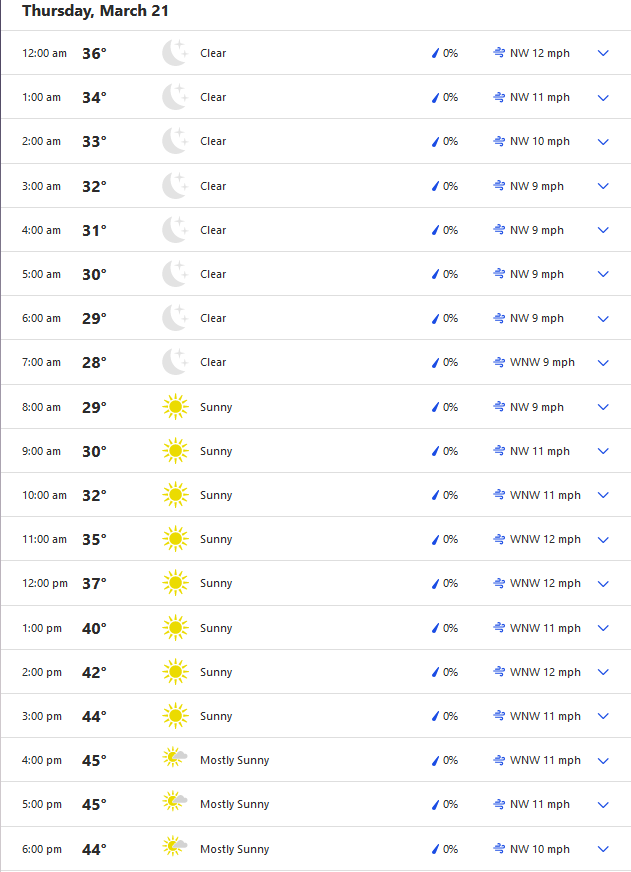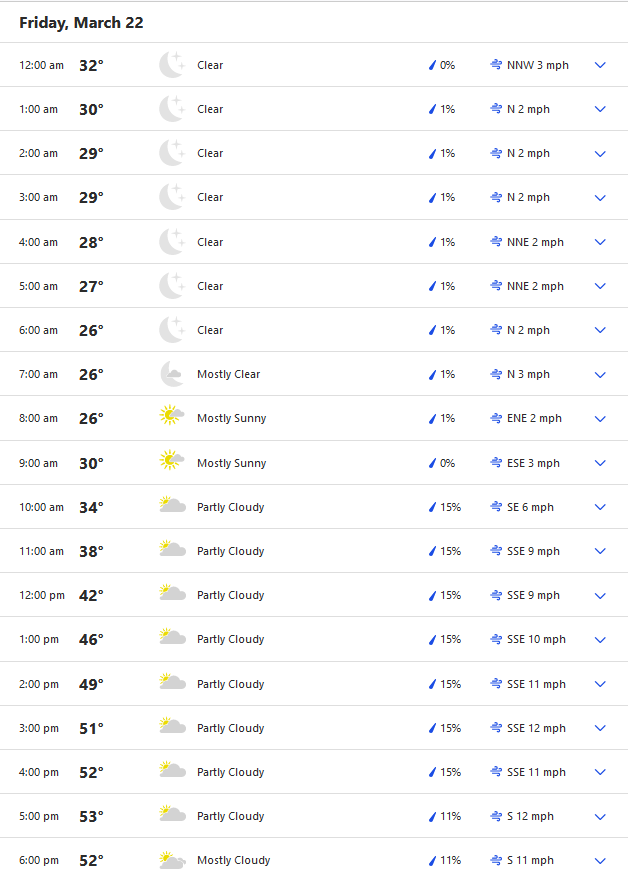Some Considerations on Copper and Oil Sprays in Relation to Frost of 21 and 22 March Ahead for Northern and Central Virginia

Before the frost: There have been some questions regarding the last growth stage “window” to use copper and about the frost announced on coming Thursday and Friday, 21 and 22 March (visible in forecast now for Winchester / Fig. 1/, Timberville, and Tyro in Virginia). Please check your weather forecast website for your location if temperatures are announced below 32F. First, we do not recommend applying delayed dormant copper in apples beyond quarter inch green (QIG) on floral buds (which is when 50% of floral buds are at the stage QIG). This is a risk for bud injury and fruit russetting later on. If you decide to risk and to apply copper later than QIG, you should use “softer” formulations of copper like Cueva or much lower equivalent metallic copper rates per acre of your copper material of choice. We just do not recommend that as we do not know what weather conditions you will have ahead. Again, even these very low rates are risky as in slow drying conditions they can cause fruit russetting. However, we now have a two frost events announced for later this week and we do not know how accurate is the forecast now i.e. how low the temperatures will drop below 32 F and and for how long these low temperatures under 32F will last on 21 and 22 March. We will see what actually happens. If you have an orchard that had fire blight last year, you should consider copper this year from silver tip to QIG bud stage, but do not apply it near frost events.
After the frost: In my previous discussions with Dr. Rosenberger, he advised that phytotoxicity to damaged foliage is a tricky thing as we don’t know how long it takes after a frost for damaged foliage to “heal”, or perhaps it always remains more susceptible to phytotoxicity? It is possible, maybe, that several days with temps > 50 F is sufficient for freeze injury to heal enough so that sprays such as captan or copper applied after that will not cause much additional damage. However, we don’t know for sure. Our impression is that oil is always more likely to trigger more damage when applied to damaged leaves because it just moves into leaves more than copper or captan and the extra surface area caused by freeze damage will allow more uptake of oil. Again, that impression may be incorrect, but we still like to share our opinion with you.
In terms of applying any foliar fertilizer after frost to help trees heal, I will deffer to Dr. Sherif Sherif’s recommendations. However, in the past some growers used to use fungicide Polyram instead of mancozeb as their next spray, along with the boron and urea. As per Warren Stiles, many years ago, it seems that Polyram contains a lot of free zinc, more than mancozeb, in terms of bioavailability, which could have some frost protection effect. The benefit from Polyram may not have been frost protection as much as it was its ability to recover tissue after a frost when zinc is applied. Again, we do not know for sure, but these are some considerations you might ruminate on.

